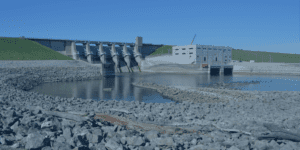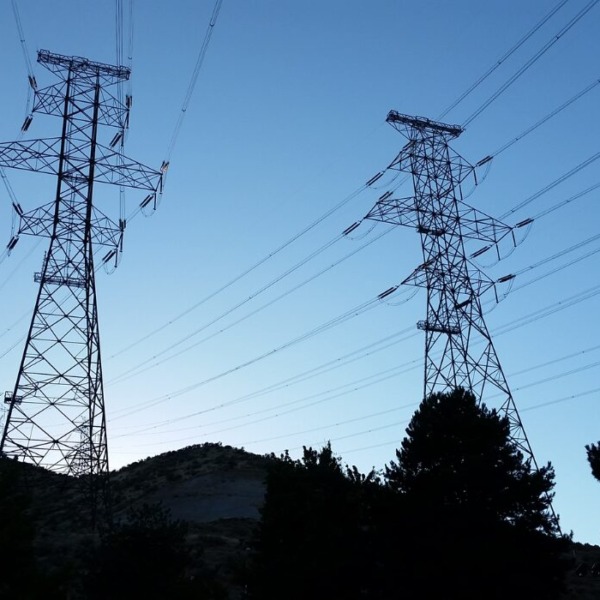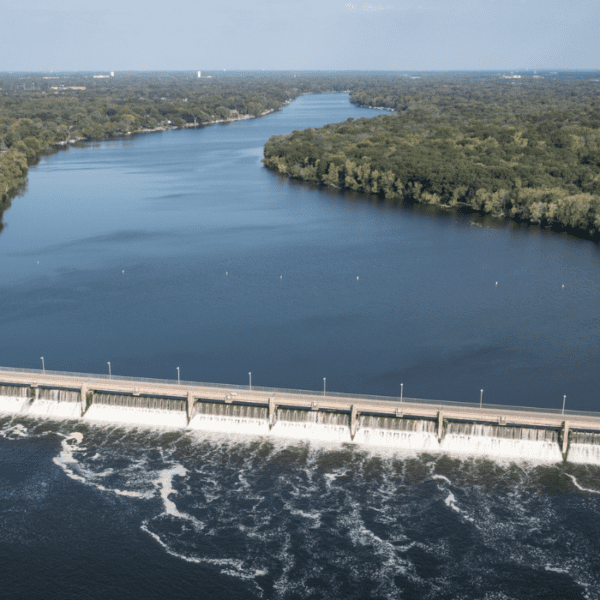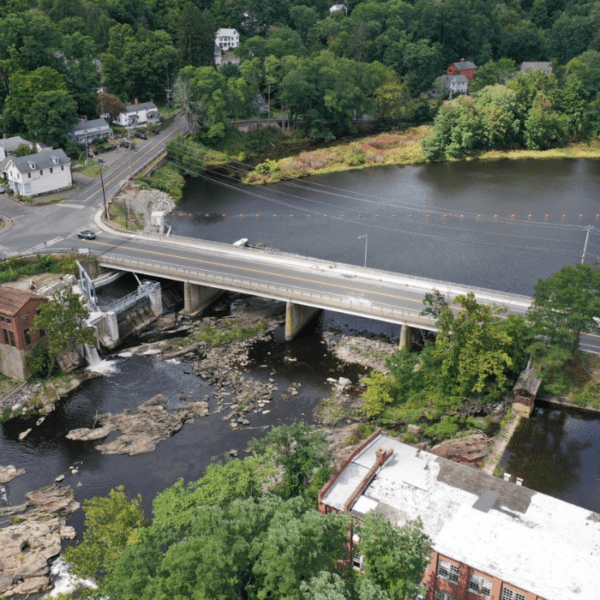
Six and a half years ago, I was standing at the base of a dam near Pella, Iowa, for an historic moment. On that hot day in August of 2014, we at Missouri River Energy Services (MRES) broke ground on one of our most ambitious projects to date: retrofitting the dam at the U.S. Army Corps of Engineers’ (USACE) Lake Red Rock to produce clean, reliable and affordable hydroelectric power.
Today, the 36.4–megawatt (MW) rated Red Rock Hydroelectric Project is completed and waiting for final wet commissioning in March 2021. Water will soon be flowing through the turbines, spinning generators that are helping to power over 18,000 homes and businesses in 61 communities in the states of Iowa, Minnesota, North Dakota, and South Dakota.
In addition to the clean, renewable electricity, the project provided new recreational amenities which are now available to the public. Anglers are catching walleye in the Des Moines River. And a five-decade-old dam has a new purpose.
During construction, the project spurred economic activity in the region through the addition of approximately 135 jobs during the 6-year construction period. Two permanent full-time positions were added to operate the plant after construction.
Why it Matters?
The Red Rock project stands as a model for how nearly all corners of the United States can utilize existing infrastructure to build clean energy projects. Is it easy to do? No. Are the regulatory hurdles high? Yes. Is it worth doing? Absolutely!
In today’s public policy environment, where “climate is everything,” America needs power developers to step up and work with stewards of publicly owned civil infrastructure to contribute to solving the climate challenge by adding hydropower at existing dams.

Deep Dive
The initial 1959 federal authorization for Lake Red Rock only funded the USACE to build the dam as a means of flood control. But thanks to the leadership and vision of then-Congressman Neal Smith, D-Iowa, the site ultimately chosen for the dam would be suitable for a power plant – eventually.
As Congressman Smith explained at the groundbreaking in 2014, in the late 1950s and early 1960s, building new hydropower facilities was an afterthought. Coal and nuclear generation were the energy sources of the future. Fast forward to 2014. With coal on the decline and new nuclear plants often prohibitively expensive, hydro made sense because it’s low-cost, carbon-free, and dependable. “I’ve lived long enough to see what comes around, goes around,” said Smith.
In its pursuit of a new power supply resource, MRES had an opportunity to acquire the license to develop a hydroelectric project on the existing Red Rock dam owned and operated by the USACE. The Red Rock project was a good fit for MRES and its member municipal electric utilities because hydro generation is a clean, renewable, and reliable source of energy and capacity. Unlike intermittent renewable resources, it’s available 24/7. And, the Red Rock Hydroelectric Project will be capable of generating up to 55 MW when there are high water levels. This typically occurs during the summer, just when it is needed the most.
While MRES will operate the Red Rock project, Western Minnesota Municipal Power Agency provided the financing and will own the project. Western Minnesota is a joint-action agency made up of MRES members in the state of Minnesota. It has provided financing for all of the major generating and transmission facilities with which MRES serves our 61 members.
The USACE was a crucial partner in the project, at both the Washington, D.C. headquarters and at the Rock Island District. The Rock Island District controls the operation of the dam and will continue to operate it for flood control, recreation, and environmental stewardship. MRES is very appreciative of the great working relationship we have enjoyed with the USACE for the past many years, from the permitting process through project completion.
We have also been fortunate to have many other great partners on the project with extensive expertise and experience. The construction team includes design engineer, Stantec, from its Chicago, Illinois office; the general contractor, Ames Construction, headquartered in Burnsville, Minnesota; and the hydro equipment provider, Voith Hydro, from its U.S. operations office in York, Pennsylvania. These companies worked through many challenges in building the project, including construction in a very limited workspace and several flooding events.
What’s Next?
Even though the Red Rock Lake opened in 1969, until the summer of 2020, it was one of approximately 80,000 dams in the United States that did not have a power-generating component. Hundreds – if not thousands – of these dams are waiting for their energy potential to be unleashed.
A 2016 report from the U.S. Department of Energy confirms that hydropower is underutilized. Far from being tapped out, the report found that U.S. hydropower could grow its installed capacity by 50% by 2050. Retrofitting dams like Red Rock across the U.S. will help us achieve this goal.
It’s heartening to see the opportunity for adding generation at existing non-powered dams to increase renewable generation is included in the Joint Statement of Collaboration – signed in October of 2020 by the U.S. environmental community and the hydropower industry. According to Stanford University, who facilitated the process of getting to the final work product, the statement is the result of a diverse range of organizations, companies, government agencies and universities committed to charting hydropower’s role in a U.S. clean energy future in a way that also supports healthy rivers. To rapidly and substantially decarbonize the nation’s electricity system, the parties to the Joint Statement recognize the role that U.S. hydropower plays as an important renewable energy resource.
To get us there, it will take a commitment from both the public and private sectors to reach this robust goal. As the country’s largest producer of hydropower, the USACE will be essential in expanding the use of the original renewable energy through these types of public-private partnerships. The USACE provides the opportunity by allowing hydro generation to be added to its existing dams. The investments need to be made by parties such as MRES. The Red Rock Hydroelectric Project is an example for the nation of how existing dams can be converted to generating assets that increase America’s renewable energy supply by maximizing existing infrastructure.
Powering Up in Iowa … More than Wind Towers and Corn-Based Ethanol
Today, when it comes to energy production, Iowa is home to more than wind and ethanol. It is now also home to the newest hydroelectric facility in the U.S. – and a model for other power providers to follow.
Indeed, Red Rock is the story of the past, present, and future of hydropower in America.











